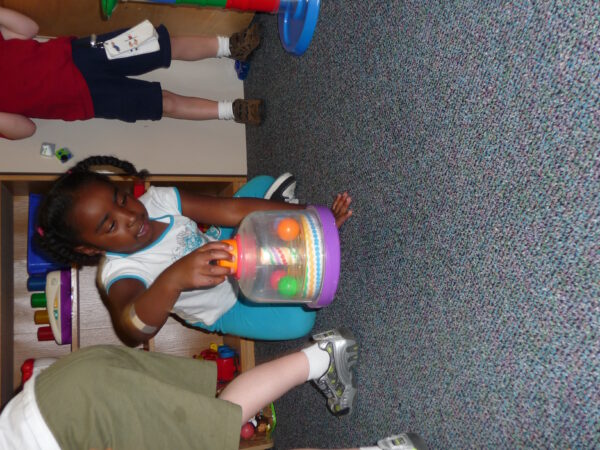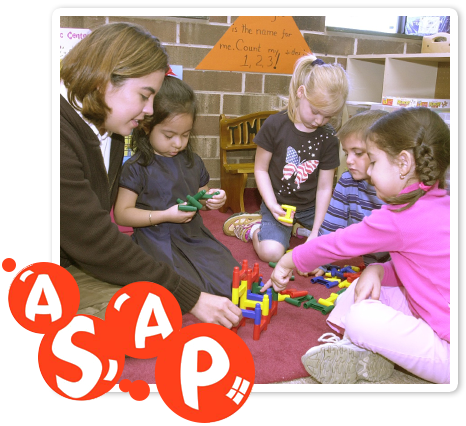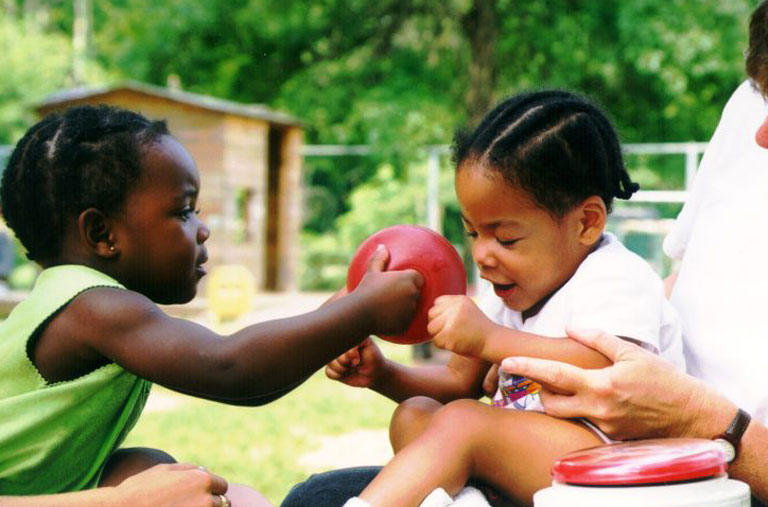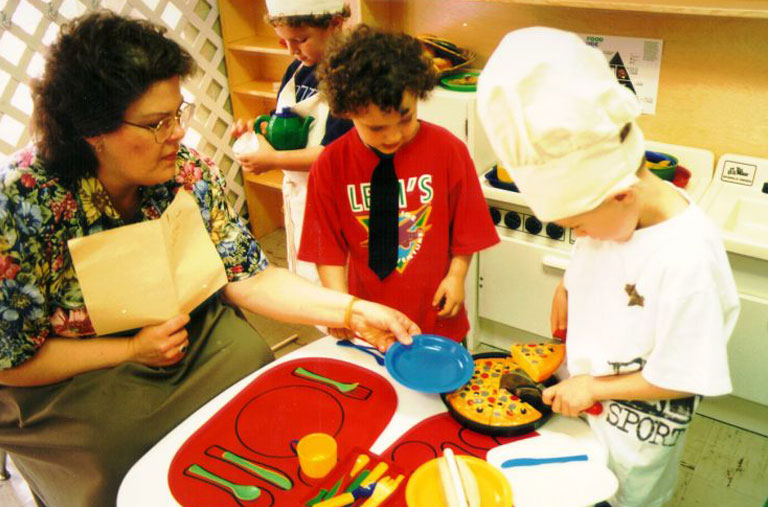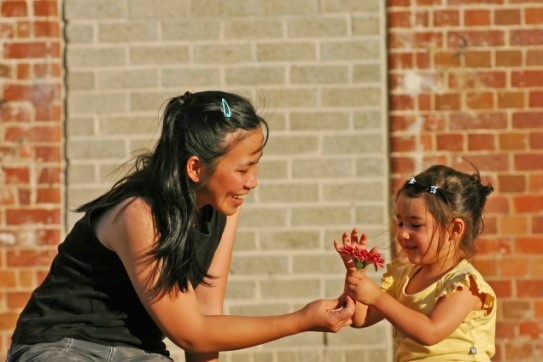The term “joint attention” describes what happens when two people pay attention to the same thing on purpose. Imagine, for example, that a teacher points to a picture book and says to a child, “Look at this book.” The child looks where the teacher is pointing, and they look at the book together. In this situation, the teacher and the child have engaged in joint attention. Children can also initiate joint attention. Imagine that you are out with your child and your child sees a dog. Your child might look up at you to see whether you also see the dog, and then look back at the dog again. This would also be joint attention – sharing attention to the dog on purpose.
